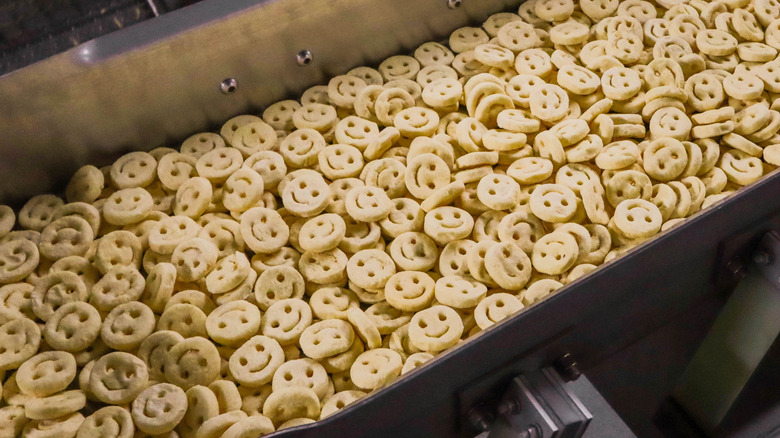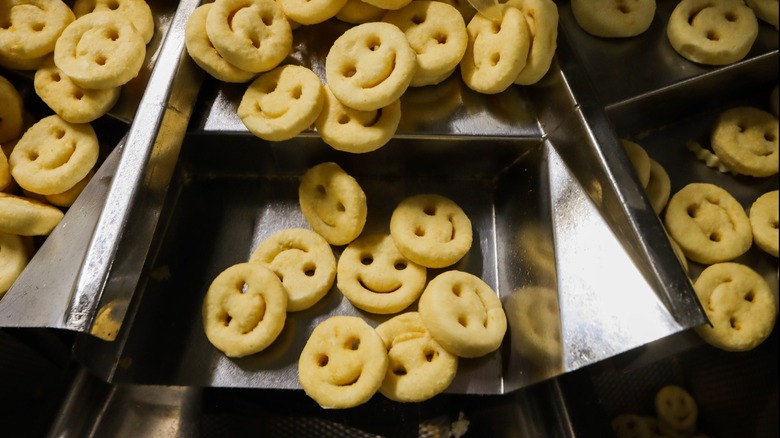How Do Smiley Fries Get Their Iconic Grin? We Found Out Exactly How They're Made
Grocery stores host a variety of frozen french fries, many golden and crispy, in the freezer aisle. But if you want your potatoes to come with a side of joy, smiley fries are the only way to go. Folks can easily make smiley fries at home using a straw, but getting them to look like the real deal isn't easy. McCain Smiles go through an intricate process to form and set those grins, and The Takeout was able to get the lowdown on what that entails after speaking with David Rawlings, senior manager of process development at McCain Foods.
As people can note from the bag, McCain Smiles are created from mashed potatoes, but that's not all. "The mashed potato is combined with dehydrated potato flakes and other special ingredients," says Rawlings. "Next, the mix is formed into the iconic Smile shape and heads into a fryer where it's partially fried or 'par-fried' to help the shape set."
The signature facial expression may be what draws customers to the product, but they also need to taste like a quality french fry to entice folks into making a second purchase. Rawlings provides us with McCain's secret to achieving ideal flavor and texture. "For the best possible outcome, you want to go directly from the par-fry to the freezer," he says. "We use a process called Individual Quick Freezing (IQF), which rapidly freezes each Smile. This preserves both the texture and flavor, so when you cook them later, they taste fresh and maintain that signature creamy-meets-crispy experience."
McCain Smiles were invented to reduce waste
David Rawlings confesses that the way french fries are produced can create a lot of waste. While that may be harmful to the environment, it's also detrimental to a company's bottom line. French fry manufacturers do their best to minimize waste, which results in some other potato products folks know and love. "Some potatoes are too small to make the 4-inch french fry that customers prefer," says Rawlings. "Potatoes also tend to be rounded on the end, leaving leftover bits that can be used for products like tater tots and hashbrown patties."
Smiley fries weren't born entirely from a desire to add a dash of merriment to dinner tables around the country. They were an ingenious way to simultaneously reduce waste and offer people an entertaining new way to enjoy spuds. "Years ago, our team explored new ways to use those perfectly good small potatoes and potato pieces, and that's how McCain Smiles were born," explains Rawlings. "We discovered a new process that allowed us to completely control the finished shape of the potato product." Folks can actually do something similar at home by mashing leftover french fries to make a frittata.
Of course, the burning question in some minds is how the fries hold their iconic grins while being par-fried in the factory. Yet, while Rawlings is happy to detail most of the process surrounding the manufacturing of McCain Smiles, divulging that particular bit of information is a bridge too far. "That's partly a trade secret," he says.

